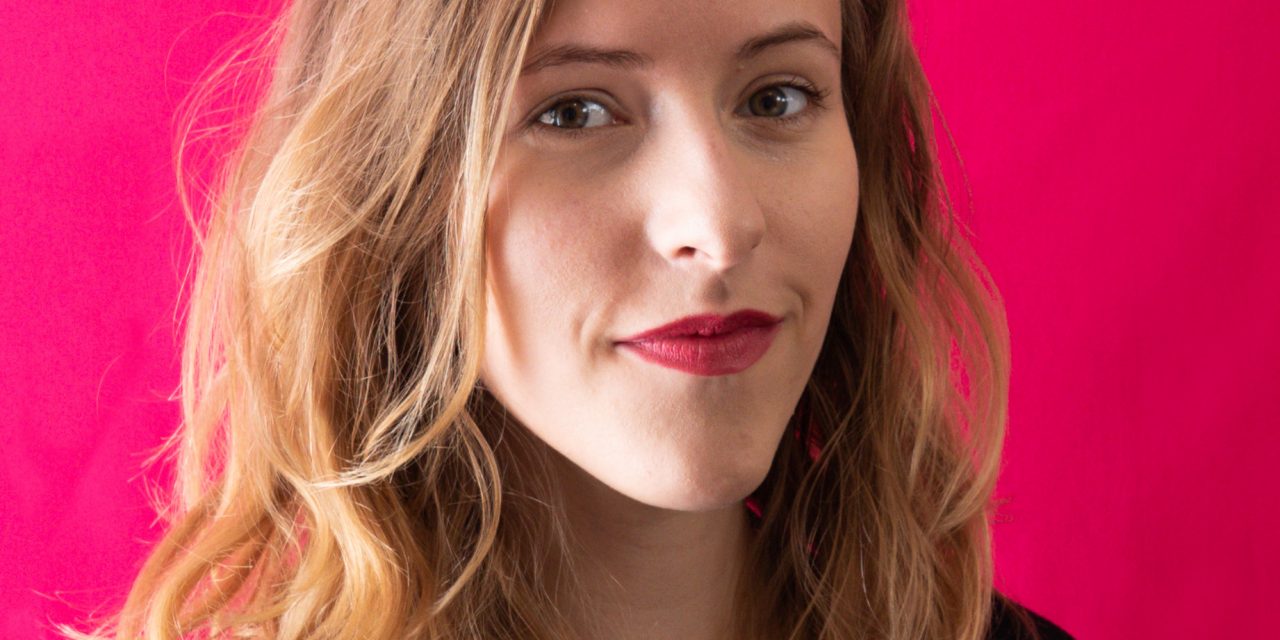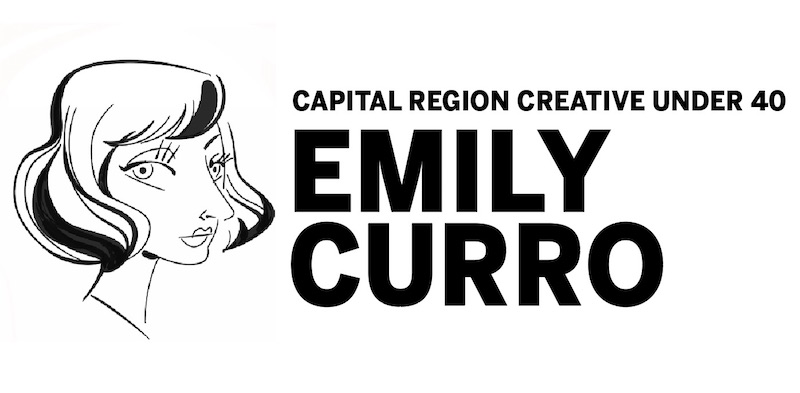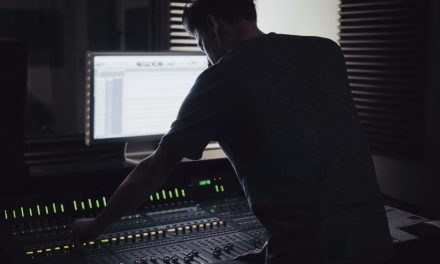Filmmaker, storyteller, designer
Current hometown: Troy
Current project: Recently wrapped a documentary on COVID using an all-female crew, which she is shopping to major networks
Collaborative Media’s Maker of the Week is made possible by KeyBank.
Michelle Polacinski has been telling stories through film since childhood, leading her to find early success in multiple facets of the film industry. Her career trajectory took an unexpected turn when she experienced disabling side effects from ciprofloxacin, also known as cipro — one of a class of antibiotic drugs called fluoroquinolones, which can produce a rare but life-threatening condition called fluoroquinolone toxicity syndrome. She used her own story as a springboard for making a documentary called “Floxed,” a shorthand name for the syndrome, aimed at educating patients and healthcare professionals about a largely under-the-radar phenomenon.
Tell me about yourself as an artist.
Well, my mom actually is an artist as well, so I grew up in that kind of family. She’s a muralist herself… growing up, she’d always encourage us to be creative. If we were bored, she’d just hand us a pen and paper or crayons or whatever and she’d be like, “OK, have fun!” That was always a part of my life, growing up.
I started finding a love for filmmaking and photography as a kid. Got a digital camera and found out that I could make a movie by taking a bunch of pictures and moving clay figures… my first movie, technically, was like a Claymation. Professionally, I’ve worked as a filmmaker for almost 10 years. It definitely feels like it (represents) more of my art, but I also like the storytelling aspect. I’ve been writing for Albany Proper lately; that’s gotten me back into writing. I used to write a blog, and I used to journal regularly. Writing is also a decent part of who I am as an artist… storytelling in general.
And you’re a designer/web designer as well?
Yeah, so… I needed to make graphics for different projects I’ve done, and so I’ve just kind of learned stuff along the way. I love using Adobe Illustrator, and just playing around and making different graphics. I’ve done that for a couple local businesses and events, but nothing super-serious. It’s really a side thing; I’ve never been paid for it.
But that’s the beauty of art: It can be a hobby, it can be something that helps in addition to your other art, or it can be something that you’re paid for. Recently I’ve gotten more into photography as well… it was something I always did for fun, but never really wanted to do as a career.
I’m less judgmental of myself with photography than I am with film. Because with film… I have a degree in it. I’m just like “Oh, I have to be really professional” all the time, and it’s hard to play around. But with photography, I’m like “Oh, this isn’t my thing; I just do this.” I like that part of it.
So, to supplement income you’ve found work in another art form.
I’ve actually tried getting other jobs and people are like, “You don’t have any experience that has to do with this.” But that’s the thing about filmmaking: There’s so much of a financial aspect to it, there’s so much that goes into marketing and all the paperwork and all that kind of stuff. Producing is all about making sure something comes together, and event planning. There’s just so much that goes into filmmaking that a lot of these skills do translate. But people are so unfamiliar with filmmaking… it’s a rare career, I feel like. It’s not something that everyone does. You can’t go into any town in the U.S. and find a filmmaker. You’ll find a plumber, but you’re not going to find a filmmaker.
Talked to me about “Floxed.” This syndrome is something you actually lived through yourself, and then you decided to make a film about it?
Yeah. I moved to Los Angeles right after college, and I was working for Triage Entertainment… (they’re) a production company underneath The Food Network.
I was working on set and I started feeling like my whole body was going numb. I started feeling really tired, and I didn’t know what was going on. It turns out I was having a near-deadly reaction to this antibiotic cipro. I actually ended up losing the ability to move around very much; I couldn’t walk for four months. I ended up losing the feeling in my entire body. I had tendon damage, my eyesight was messed up for a little while, I had brain damage — there’s just a lot that happened because of it.
It was incredibly traumatizing, and I obviously couldn’t work anymore… I had to move back to the Capital Region because of it. I lost my house, and my boyfriend and I lost everything…. I lived with my parents for like a year and a half before I moved back out, and I was like “What am I going to do? I can’t go back to L.A. and just do the same thing I did before.”
I ended up healing; I got better. It took a lot: I changed my diet completely; I was on a ketogenic diet, but for multiple sclerosis. All of my symptoms kind of lined up with that, even though that’s not what it was. That got me back on track. And then I took a ton of supplements; I went to, I think, 13 different doctors who helped guide me through the whole thing.
I’m normally the type of person who researches my drugs beforehand — but I never researched antibiotics. I mean, antibiotics are safe, that’s what I thought. I never thought an antibiotic would do that, and could do that to a person.
You got put on the antibiotic just because of an infection or something?
Yeah, it was a very low-level UTI. Which is against FDA prescribing protocols: You’re only supposed to use fluoroquinolone antibiotics like cipro for extremely serious infections. Like if you’re hospitalized, or you have a really bad kidney infection and no other antibiotics can kill it.
So they should not have given that to you.
No, it was prescribed inappropriately, and that’s unfortunately very common. And there isn’t really very much discipline involved… there are literally hundreds of thousands of people who have reacted to this in such an extreme way, all around the world. There’s a ton of online support groups; there are informational websites; there are hundreds of studies on it. It’s well-known. There are either five or six black box warnings on cipro alone right now. Normally, once a drug gets two or three black box warnings, they’re taken off the market — but that’s not the case for fluoroquinolones. They make a lot of money for pharmaceutical companies.
I’m not even advocating for taking them off the market. I mean, sure, would that be great? Yes. But also, cipro was given intravenously to a friend of mine… and it saved her life. I can’t even say, let’s take this off the market. My main thing is, let’s make this safer for people. Let’s make sure people aren’t being given this drug inappropriately. It’s not something you can just hand off to people and say, “Have a nice day.”
And that’s the thing: There are so many things you can do to prevent a reaction, which I know now. There’ve been studies going on since 2007 on how to prevent a reaction to this drug, where you can take it safely. But they’re not enacting them in hospitals as a regular practice. That’s kind of what I want to do with the film — educate people and change the way these drugs are prescribed, because it’s something that I went through. And no one’s made a film about it yet.
So that’s a film that’s currently in production?
Yes, we were supposed to finish it this year. We were literally supposed to finish it by December, and then we were going to finish up post (production) by like January or February, to get it ready for festivals for 2021. But, unfortunately, with COVID… everything had to be canceled. We even have a celebrity that was going to be in the film, and we were supposed to film him probably around the summer. Obviously, that didn’t work out… plus, everyone that we’re filming is immunocompromised because they have had (a) toxic reaction to this drug. Now, with safety regulations in place and filming kind of coming back to normal, we can’t even go around people and wear masks. It’s still way too big of a risk for people who have autoimmune disorders.
So it’s basically on hold at this point.
It is on hold. Until next year, hopefully. But we’re definitely planning on finishing it; we have a solid two-thirds of filming complete.
Did I see something that said it was partially animated?
Part of it is going to be animated… it’s really hard to kind of explain what these symptoms are, and how you’re experiencing them, because you can’t see them. You can’t see someone’s body go numb. You can’t see their tendons disintegrate. It literally gives people nightmares, or (it) causes people to become depressed or suicidal. It’s really crazy how this drug can change everything about a person. You can’t really show that on camera.
You went the animation route to help better explain it.
Exactly.
I’m curious: You mentioned having symptoms similar to MS… did it take a while to figure out what was wrong with you?
It took a few weeks. I started having symptoms actually a month after I took cipro, so it wasn’t an immediate “Oh, I took this drug and now I’m feeling this way.” I didn’t know what it was at all… I couldn’t make an appointment with my doctor; he was too busy. So I ended up going to the ER, and they wouldn’t do anything. They either thought I was crazy because I said “My whole body is numb,” (or) they were like “Well, you need an MRI… you need an appointment with a neurologist.”
I ended up finally going to my doctor. I called him and (said), “I’ve been to a neurologist. I’ve gotten an MRI. All these things are happening to me; I don’t know what else to do. They said they haven’t found anything.” He knew what it was right away, because he had a previous patient two years prior who had fluoroquinolone toxicity — who was floxed. And I think if I hadn’t gone to him, I wouldn’t have been able to start a healing protocol — to know what it was; to know what to do; to know what supplements to take, what not to take, what not to eat, all that kind of stuff. If he hadn’t diagnosed me and known what it was, I might not be alive today.
One other question, Michelle. Why do you see the arts as valuable?
Such a tough question… I think, first of all, that art is something that everyone possesses, and I think that being creative is a huge part of being a person. I think that’s what separates people from animals. I don’t think it’s intelligence, because there’s a ton of animals that are intelligent… I really think it’s the ability to create, and to create things that are beautiful, and to admire those things. And art isn’t always beautiful.
I feel like we’ve seen a lot of political artwork lately, just kind of expressing what you can’t say. Expressing what the community is feeling. There’s always that talk of “the individual,” like Western culture is all about supporting the individual, and we’re on our own. But that’s just so unrealistic. We don’t exist without our communities. We can’t do anything without other people. Filmmaking is a perfect example: You need to be part of a team. You can’t make a film by yourself — I tried, it’s impossible!
You’re not going to get something truly remarkable with just yourself; you need other people, and I feel like art is an expression of that. It’s a therapy; it’s being able to look at a piece of art and being like, “Oh my god, this is what I’ve been feeling this whole time.”
Find Michelle online: Website, Instagram, Twitter
Wish to nominate a Maker of the Week? Email nominations.
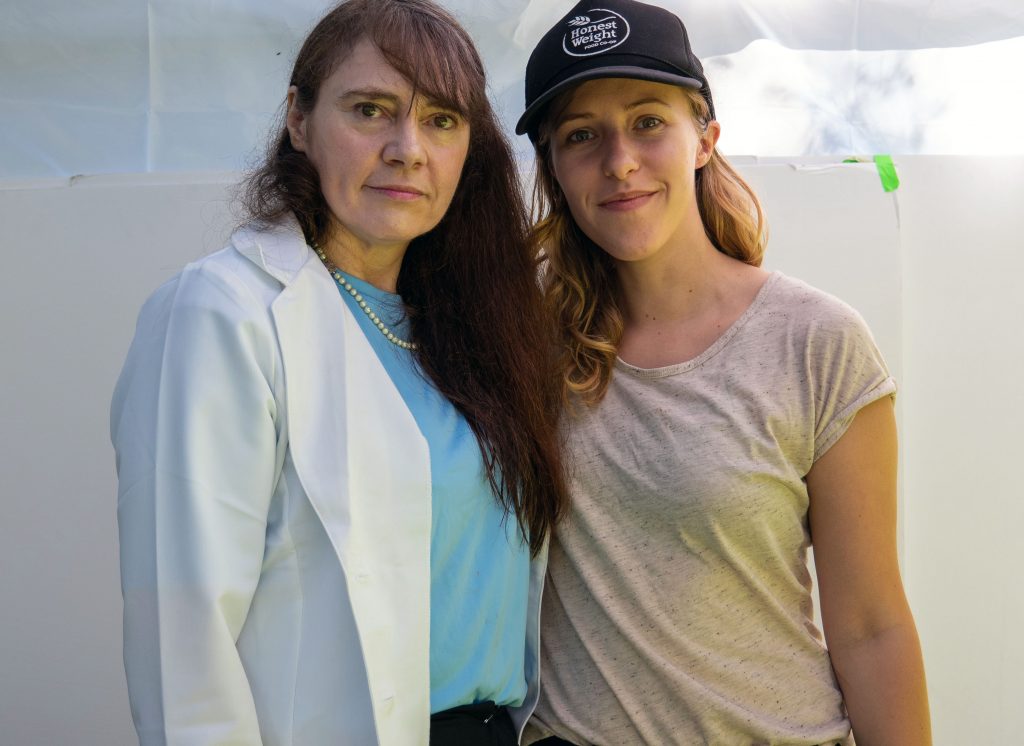
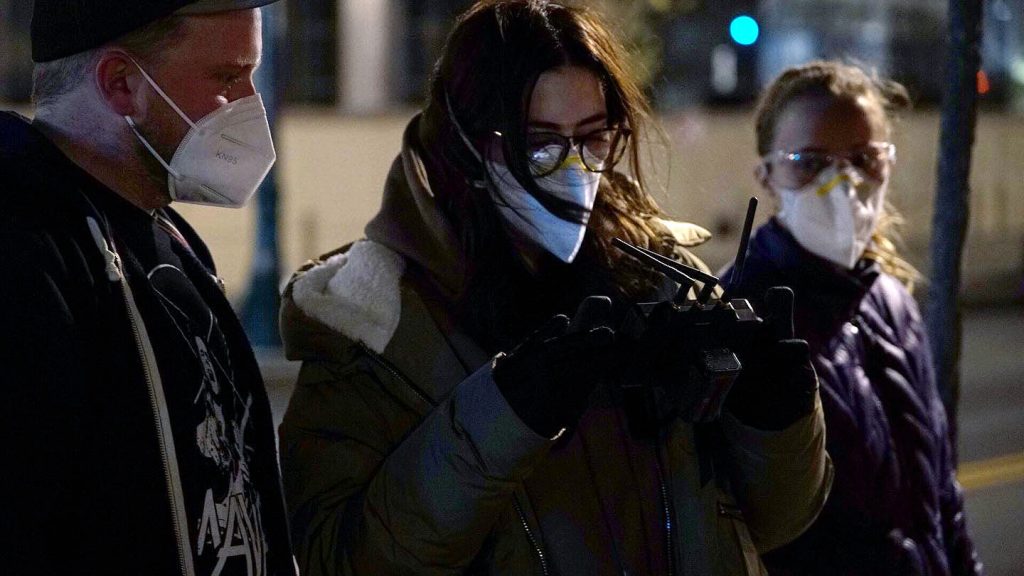
compliance officer Michelle Polacinski on set of the short film “Devour.” Photo by Micah Kahn.

